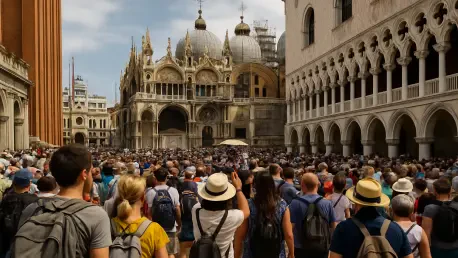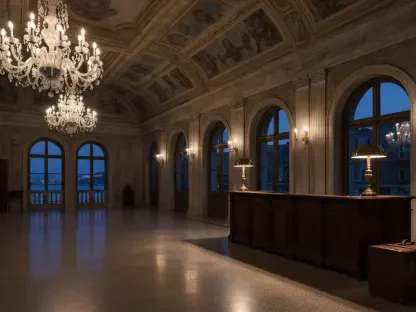What happens when the serene beauty of a Greek island or the historic charm of a Croatian coastal town becomes a battleground for millions of tourists? In destinations like Zakynthos, Dubrovnik, and Tirol, the postcard-perfect allure is being trampled underfoot by overwhelming crowds, leaving locals and travelers alike grappling with a new reality. This crisis of overtourism is not just a fleeting inconvenience but a profound threat to the very essence of these cherished places, raising urgent questions about sustainability and balance in travel.
Why the Crowds Matter: Unpacking a Growing Threat
The significance of overtourism extends far beyond mere inconvenience or long lines at popular attractions. It represents a critical challenge to the cultural heritage, environmental health, and social fabric of some of Europe’s most iconic regions. In Greece, Croatia, and Austria, the relentless influx of visitors is pushing infrastructure to its limits, driving up living costs, and alienating residents who feel their homes are no longer their own. This issue strikes at the heart of what makes travel meaningful—preserving the authenticity of a destination for future generations.
Understanding the stakes requires a look at the broader implications. Overtourism jeopardizes the delicate balance between economic gain and cultural preservation, turning thriving communities into mere backdrops for tourist selfies. The urgency to address this problem resonates with anyone who values the integrity of historic sites or the tranquility of natural landscapes, making it a global concern that demands attention and action from all stakeholders.
Hotspots in Crisis: Where the Strain Is Most Severe
Across Greece, Croatia, and Austria, specific regions are bearing the brunt of this tourism tidal wave, each facing unique yet interconnected struggles. In Zakynthos, Greece, a staggering six million overnight visitors in a recent year overwhelmed a local population of just 40,000, resulting in a ratio of 150 tourists per resident, according to research by Which?. This imbalance transforms daily life into a logistical nightmare, with packed streets and strained resources becoming the norm rather than the exception.
Croatia’s coastal areas, such as Istarska Zupanija, are similarly besieged, where historic towns like Dubrovnik struggle to maintain their charm amid traffic congestion and overburdened public services. Meanwhile, in Austria’s alpine regions like Tiroler Oberland, the seasonal deluge of skiers and hikers threatens the pristine natural beauty that draws visitors in the first place. Each location paints a vivid picture of social disruption and environmental stress, highlighting how unchecked tourism can erode the very attractions it seeks to celebrate.
The economic consequences are equally stark. While tourism fuels local economies, the benefits are often unevenly distributed, with large businesses profiting while smaller, community-focused enterprises struggle to keep up with inflated costs. This disparity creates a vicious cycle, where the cultural and natural assets that define these places risk permanent damage from the sheer volume of foot traffic and resource depletion.
Ground-Level Perspectives: Voices of Frustration and Concern
Those living in the shadow of overtourism offer raw, unfiltered insights into its impact on their daily lives. A hypothetical resident of Zakynthos might describe the frustration of navigating streets clogged with tourists, lamenting how local shops now cater almost exclusively to visitors, leaving little for the community. Such sentiments echo a broader feeling of being sidelined, where the island’s identity seems to shift toward a tourist playground at the expense of its heritage.
Experts add weight to these personal accounts with hard data. The Which? study labels Zakynthos as Europe’s most overcrowded destination, a statistic that underscores the scale of the challenge. Travelers, too, notice the strain—picture a visitor to Dubrovnik recounting packed cobblestone alleys where the historic ambiance is drowned out by the clamor of selfie sticks and tour groups. These combined perspectives, from locals to analysts, weave a compelling narrative of urgency, making the crisis tangible for anyone planning a trip to these regions.
Beyond individual stories, there’s a collective call for change. Residents in Austrian ski towns like those in Tirol express concern over overwhelmed services during peak seasons, where even basic amenities become scarce under the weight of demand. This chorus of voices, blending personal hardship with empirical evidence, drives home the reality that overtourism is not just a statistic but a lived experience disrupting communities on multiple levels.
Practical Solutions: How to Lighten the Load
Addressing overtourism requires a dual approach, empowering both travelers and policymakers to take meaningful action. For visitors, one effective strategy is to seek out lesser-known gems—think secluded Greek islands beyond the over-hyped Santorini or quiet Croatian villages instead of Dubrovnik. Such choices not only offer a more authentic experience but also help distribute tourist numbers more evenly, easing pressure on saturated hotspots.
Traveling during off-peak seasons presents another viable option. Visiting Tirol in late fall or early spring, for instance, can reduce the seasonal crush while still showcasing the region’s alpine beauty. This shift in timing benefits both the traveler, who enjoys a less crowded experience, and the destination, which gains breathing room to manage its resources more sustainably.
On a systemic level, policymakers must step up with bold regulations. Implementing visitor quotas or seasonal caps, as increasingly discussed in affected areas, could provide a framework to control inflows without sacrificing economic vitality. These measures, paired with campaigns to promote under-visited regions, offer a blueprint for sustainable tourism management, ensuring that the charm of these destinations endures for years to come.
Reflecting on a Path Forward
Looking back, the struggle against overtourism in Greece, Croatia, and Austria revealed a profound tension between the allure of travel and the fragility of cherished destinations. Communities wrestled with the dual reality of economic dependence on visitors and the erosion of their way of life, as places like Zakynthos became symbols of a broader European challenge. The voices of locals, backed by stark data, painted a picture of urgency that demanded innovative responses.
Moving ahead, the responsibility falls on both travelers and authorities to rethink their approach. Exploring hidden corners of these countries and advocating for policies like visitor limits emerged as tangible steps to restore balance. The journey toward sustainable tourism promises not just preservation of cultural and natural treasures, but also a renewed appreciation for travel as a shared, respectful endeavor.









